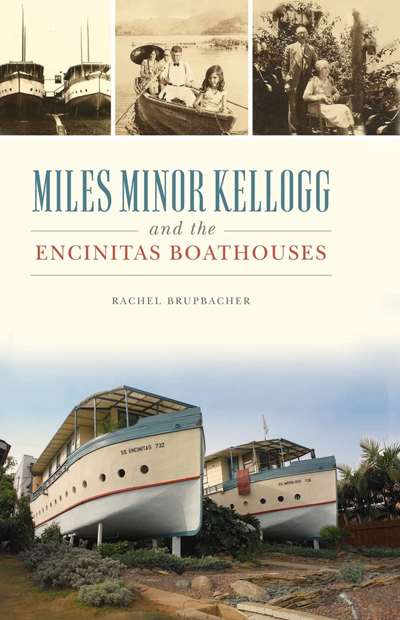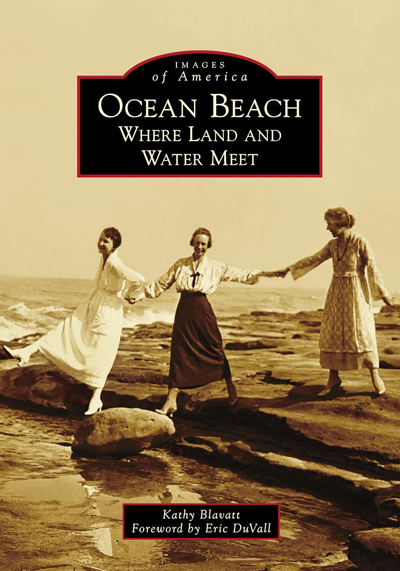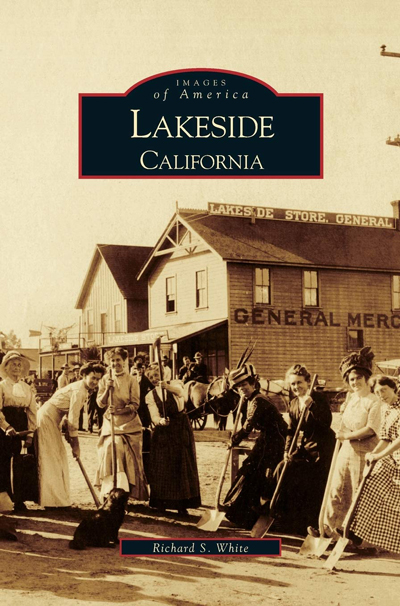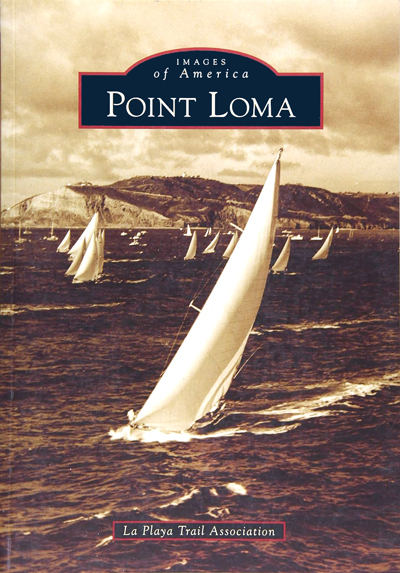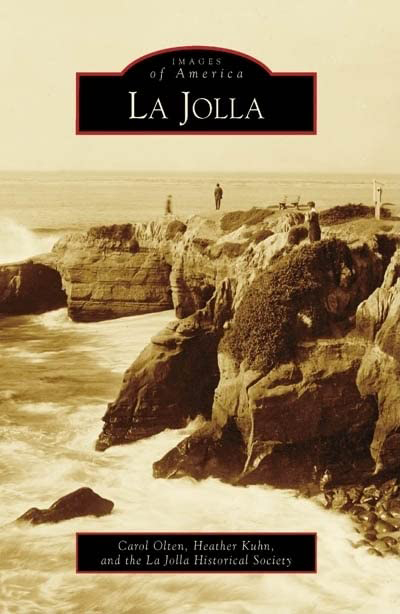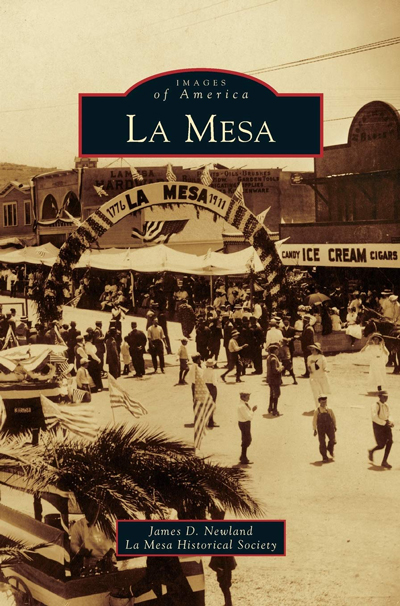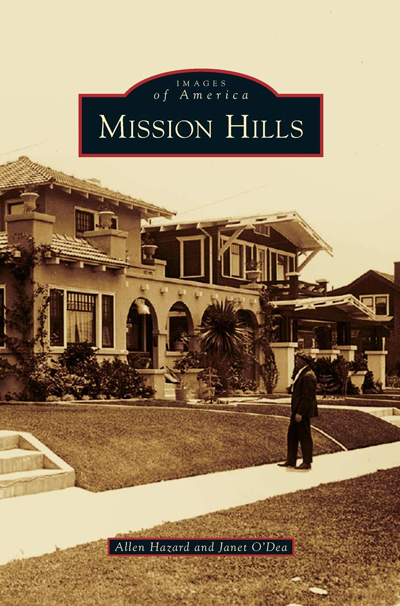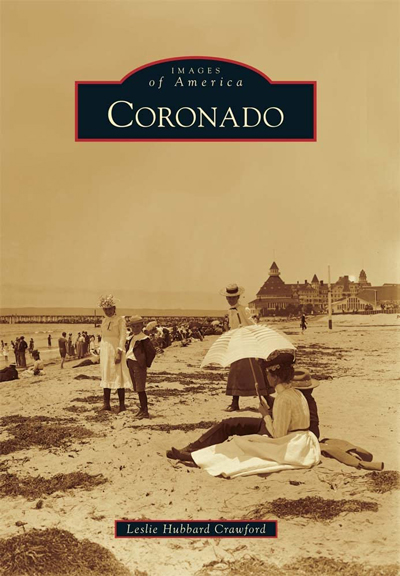 |
|
Penning the Past
Join us for this dynamic Zoom lecture series and learn about the unique character of San Diego's historic neighborhoods through the eyes of impassioned writers and historians. Brought to life by esteemed local authors, Penning the Past promises to be an enriching exploration of San Diego's architectural legacy and historical tapestry.
February 10 · 11am-12 noon
Hip and historic, North Park fascinates with its commercial energy and Craftsman charm. The community has always embodied an enterprising spirit. In the 1870s, cronies of Alonzo Horton mapped neighborhoods north of Balboa Park in a patchwork of individual subdivisions. Four decades later, John Spreckels's streetcars finally brought investors, residents, and shopkeepers, creating San Diego's slice of Bungalow Heaven. Baseball great Ted Williams played on North Park's fields, and tennis star Maureen Connolly trained on its courts. The local shops served as a regional commercial center after World War II, and the annual Toyland Parade attracted 300,000 spectators each year. Although decades of decline followed the exciting 1950s, North Park is flourishing again in a renaissance initiated by the restoration of the elegant North Park Theatre in 2005. This pictorial history tells the classic story of a boom, bust, and boom.
PURCHASE ADVANCE TICKETS
March 9 · 11am-12 noon Built in 1929, the Boathouses of Encinitas have captured the attention of locals and tourists alike for decades. Their architect, Miles Minor Kellogg, shared the creative flair and religious fervor of his distant cousin Dr. John Harvey Kellogg and had a passion for invention, music, and poetry. A talented carpenter, Miles built his first house at seventeen and worked his way cross-country until settling with his family in the growing town of Encinitas. His construction company, Kellogg and Son, helped transform the landscape, and the unique bungalows were the culmination of his dream to build a boat. Join author Rachel Brupbacher as she traces the steps of her ancestor and one of San Diego County's most innovative architects.
PURCHASE ADVANCE TICKETS
April 13 · 11am-12 noon Water defines Ocean Beach by its unique location where the Pacific Ocean meets the mouth of the San Diego River, alongside Mission Bay, formerly known as False Bay, which connected to tidal marsh areas. The beach town's natural attractions and new prospects brought early settlers to Ocean Beach when it was established in 1887 by William "Billy" Carlson and Frank Huggins. Ocean Beach's landmass history is shaped and reshaped by major storms, wave and tidal surges, and droughts, which in turn transform the community's natural habitat, culture, and development. For example, the Ocean Beach Woman's Club's (OBWC) Flatiron Building, constructed on the shoreline, was destroyed by several storms from 1939 through 1941 and later removed, and the area where it once stood was turned into a park. The OBWC later moved its permanent headquarters away from the beach. The history and fabric of this unique ocean community is made up of an assortment of characters and spirited generations of individuals who have left their loving marks through their homes, gardens, businesses, stories, achievements, and community activities.
PURCHASE ADVANCE TICKETS
May 11 · 11am-12 noon Purchased by the El Cajon Valley Land Company in 1886, Lakeside began as a small hamlet along the banks of the San Diego River. Home to the only natural lake in San Diego County, Lakeside offered visitors throughout the century a scenic backdrop for boating, fishing, hunting, riding, and hiking. Captured here in over 200 vintage images is the history of this town located just 25 miles east of San Diego. After the San Diego Mission was established in 1769, the Padres explored the backcountry, seeking grazing lands for their livestock. Following the San Diego River upstream they came to a broad valley, which they named El Cajon, "the box." In 1886, 6,600 acres were sold to the El Cajon Land Company for the Lakeside town site and a large inn was built as a resort. Due in large part to the trains coming through Lakeside in 1889, Lakeside had become a thriving community by the turn of the century.
PURCHASE ADVANCE TICKETS
June 8 · 11am-12 noon
From the arrival of Juan Rodríguez Cabrillo in 1542 to the current world-class yachtsmen and women, San Diego's beautiful natural harbor hugs the peninsula of Point Loma and boasts a significant past. The strategic location of Point Loma has been home to both military defense and business genius. The fishing fleets of the Chinese and Portuguese communities earned the Roseville area of Point Loma the nickname "Tunaville." Today, Point Loma is one of San Diego's most historic neighborhoods; a destination for culture, fine dining, and sportfishing; and host to important military bases. Visitors from around the world enjoy spectacular vistas and waterfront views of the Pacific Ocean, harbor, city, and islands and mountains of Mexico from atop the peninsula at Cabrillo National Monument and Fort Rosecrans National Cemetery.
PURCHASE ADVANCE TICKETS
July 13 · 11am-12 noon La Jolla, California, famously known as "The Jewel," is noted for its natural beauty and appealing Mediterranean-like climate. Magnificent sea cliffs and caves, bathing coves, and sandy beaches have attracted visitors, developers, and residents since the 1880s. By the early 1900s, a small community developed with artists congregating to the internationally known Green Dragon Colony. Newspaper heiress Ellen Browning Scripps and her half-sister Eliza Virginia established residences and became the community's renowned philanthropists. Many beautiful homes and institutions, along with a growing commercial district next to the sea, owe their designs to architect Irving Gill. Today La Jolla still attracts visitors from around the world and is home to the rich, the famous, the avant-garde, and intelligentsia.
PURCHASE ADVANCE TICKETS
August 10 · 11am-12 noon On February 16, 1912, La Mesa Springs, a community of 700 citrus farmers, home seekers, developers, and businessmen, incorporated into the City of La Mesa. Located among the rolling hills and mesa lands between San Diego and El Cajon, today's suburban city of over 56,000 is still renowned for its small-town character, featuring its historic village business district, family-friendly neighborhoods, good schools, and ample retail and recreational amenities. The area's centuries-old prehistory and history can be traced to the natural springs that attracted stockman Robert Allison in 1869. Allison Springs, later renamed, prospered and grew after the arrival of the railroad in 1889. After incorporation, the young city grew steadily, reaching 3,925 residents by 1940. Post World War II La Mesa exemplified the exponential suburban growth of the region, expanding to the north and west of the old downtown to accommodate 50,000-plus residents by 1980—all were attracted, as today, to the "Jewel of the Hills."
PURCHASE ADVANCE TICKETS
September 14 · 11am-12 noon Italian immigrants settled along San Diego's waterfront in the early 1900s and formed the "Italian Colony," a tightly knit community that provided refuge, shared culture, and heritage. Extended families, new businesses, and church traditions formed the foundation for a lasting social code. It was no coincidence that the area would become known as Little Italy—it was exactly that for its inhabitants—a home away from their native land. But by the mid-1960s, changes brought by war and urban modernization began to unravel the community. Take a compelling journey through this unique immigrant enclave. Vivid images and descriptive captions highlight essential elements of this community, such as labor and longing, fishing and family, ritual and revitalization. Through photographs contributed by local community members, this volume traces the evolution of a humble fishing village into the chic urban neighborhood that is Little Italy today.
PURCHASE ADVANCE TICKETS
October 12 · 11am-12 noon Several visionaries shaped the character that defines present-day Mission Hills. First, there was Sarah Miller, stepdaughter of Captain Johnston of the SS Orizaba. She inherited land from him and built a dream home overlooking Old Town and the Pacific Ocean. There was also Kate Sessions, the mother of Balboa Park, whose nursery growing grounds just outside the original Mission Hills subdivision proved difficult for her clientele to traverse, leading her to convince transportation mogul John D. Spreckles to expand the streetcar route to accommodate her business. In 1905, George Marston, a San Diego civic leader, commissioned landscape architect and urban planner John Nolan to implement a development plan for the city. Nolan's plan, however, was never adopted. In 1908, as if to prove what was possible, Marston's syndicate formed the restricted subdivision of Mission Hills. Then, in 1909, the city announced plans to celebrate the opening of the Panama Canal. The fuse was lit, and the boom that followed brought builders and skilled artisans to San Diego. As a result, Mission Hills became architecturally magnificent.
PURCHASE ADVANCE TICKETS
November 9 · 11am-12 noon During the 1880s, a great land boom was sweeping California. Two visionary entrepreneurs, Elisha Babcock and H. L. Story, imagined Coronado as a resort and brought their dream to reality by luring the wealthy and famous to their exclusive red-roofed hotel on the beach. John D. Spreckels continued to build upon that dream, leaving a legacy through his many gifts to the city. The U.S. Navy has played a prominent role in Coronado's development, with North Island officially known as the birthplace of naval aviation, and later, with U.S. Navy SEALs stationed at Naval Amphibious Base. Coronado and North Island are surrounded by water and only accessible by the peninsular Silver Strand and the iconic San Diego-Coronado Bay Bridge. This creates a small town atmosphere with a unique combination of cosmopolitan beach resort and Navy town, rich in history.
PURCHASE ADVANCE TICKETS
|
TOURS & EVENTS
Marston House Museum
|
Mailing - PO Box 80788 · San Diego CA 92138 | Offices - 3525 Seventh Avenue · San Diego CA 92103
|

